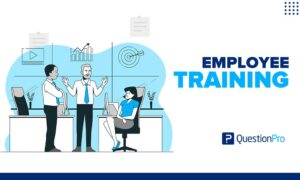Unveiling Leakage in Small and Medium Enterprises: A Comprehensive Guide
Introduction
Leakage within small and medium enterprises (SMEs) is a critical concern that often goes unnoticed until it significantly impacts the business. Understanding the nuances of leakage, its causes, and preventive measures is paramount for sustaining growth and stability. In this guide, we delve deep into the realm of leakage within SMEs, offering insights and strategies to mitigate its adverse effects.
Job leakage in small and medium-sized companies
Leakage within small and medium enterprises (SMEs) encompasses various aspects, including employee turnover, information breaches, and financial losses. This section explores the concept of leakage within the context of SMEs, shedding light on its prevalence and implications for business sustainability.
Understanding Leakage in SMEs
Leakage, often referred to as attrition or turnover, pertains to the loss of valuable resources within an organization. In the context of SMEs, leakage encompasses both tangible and intangible assets, ranging from skilled employees to proprietary information.
Causes of Leakage
Several factors contribute to leakage within SMEs, including inadequate retention strategies, lack of career growth opportunities, and ineffective communication channels. Addressing these root causes is essential for minimizing attrition and preserving organizational stability.
Impacts of Leakage
The ramifications of leakage extend beyond immediate workforce disruptions, impacting productivity, morale, and profitability. SMEs experiencing high levels of leakage often struggle to maintain operational efficiency and competitive edge in the market.
Prevention Strategies
Implementing proactive measures to prevent leakage is imperative for SMEs looking to thrive in a dynamic business landscape. These strategies may include fostering a positive work culture, providing professional development opportunities, and enhancing employee engagement initiatives.

FAQs (Frequently Asked Questions)
What are the primary causes of leakage within SMEs?
Leakage within SMEs can be attributed to various factors, including inadequate retention strategies, limited growth opportunities, and poor organizational culture.
How does leakage impact the overall performance of SMEs?
Leakage adversely affects SMEs by diminishing productivity, increasing operational costs, and eroding employee morale, ultimately hindering long-term growth and sustainability.
What role does employee engagement play in mitigating leakage?
Employee engagement initiatives foster a sense of belonging and loyalty among staff, reducing turnover rates and enhancing organizational resilience against leakage.
Are there any industry-specific challenges associated with leakage in SMEs?
While the core principles of leakage prevention apply across industries, SMEs operating in highly competitive sectors may face unique challenges, such as talent poaching and intellectual property theft.
How can SMEs leverage technology to address leakage concerns?
Implementing robust HRIS (Human Resource Information Systems) and cybersecurity measures can help SMEs mitigate leakage risks associated with data breaches and employee turnover.
What are some cost-effective strategies for SMEs to prevent leakage?
SMEs can adopt cost-effective strategies such as flexible work arrangements, recognition programs, and skill development initiatives to foster employee loyalty and reduce attrition rates.
Conclusion
Leakage within small and medium enterprises (SMEs) poses significant challenges to organizational sustainability and growth. By understanding the root causes, impacts, and preventive strategies associated with leakage, SMEs can proactively address workforce attrition and safeguard their business interests.





















